A New Crop Spectral Signatures Database Interactive Tool (CSSIT)
Abstract
1. Summary
2. Data Description
Spectral Signatures and Parameters Collection Process
3. Methods
3.1. Vegetation Indices and CSSIT
3.2. Resampling of Spectral Signatures and Other Analysis
4. User Notes
Supplementary Materials
Author Contributions
Funding
Conflicts of Interest
References
- Hueni, A.; Nieke, J.; Schopfer, J.; Kneubuhler, M.; Itten, K. The spectral database SPECCHIO for improved long-term usability and data sharing. Comput. Geosci. 2009, 35, 557–565. [Google Scholar] [CrossRef]
- Milton, E.J.; Schaepman, M.E.; Anderson, K.; Kneubühler, M.; Fox, N. Progress in field spectroscopy. Remote Sens. Environ. 2009, 113, 92–109. [Google Scholar] [CrossRef]
- Milton, E.J. Field spectroscopy. In Geoinformatics, Encyclopedia of Life Support Systems (EOLSS); Atkinson, P., Ed.; EOLSS Publishers: Oxford, UK, 2004; p. 28. [Google Scholar]
- Salisbury, W.; Walter, S.; Vergo, N.; D’Aria, M. Infrared (2.1–25 micrometers) Spectra of Minerals; Johns Hopkins University Press: Baltimore, MD, USA, 1991. [Google Scholar]
- Grove, L.; Hook, J.; Paylor, D. Laboratory Reflectance Spectra for 160 Minerals 0.4–2.5 Micrometers; Jet Propulsion Laboratory Publications: Pasadena, CA, USA, 1992. [Google Scholar]
- Kokaly, F.; Clark, N.; Swayze, A.; Livo, E.; Hoefen, M.; Pearson, C.; Wise, A.; Benzel, M.; Lowers, A.; Driscoll, L.; et al. USGS Spectral Library Version 7. Available online: https://pubs.usgs.gov/ds/1035/ds1035.pdf (accessed on 23 February 2018).
- Baldridge, A.M.; Hook, S.J.; Grove, C.I.; Rivera, G. The ASTER spectral library version 2.0. Remote Sens. Environ. 2009, 113, 711–715. [Google Scholar] [CrossRef]
- Arizona State University (ASU), Mars Spectral Library. Available online: http://speclib.asu.edu (accessed on 3 January 2017).
- SPECCHIO, A Spectral Information System. Available online: http://specchio.ch (accessed on 2 January 2017).
- Systems Ecology Laboratory, Vegetation Spectral Library. Available online: http://spectrallibrary.utep.edu (accessed on 3 January 2017).
- Cilia, C.; Panigada, C.; Rossini, M.; Meroni, M.; Busetto, L.; Amaducci, S.; Boschetti, M.; Picchi, V.; Colombo, R. Nitrogen Status Assessment for Variable Rate Fertilization in Maize through Hyperspectral Imagery. Remote Sens. 2014, 6, 6549–6565. [Google Scholar] [CrossRef]
- Jones, C.L.; Weckler, P.R.; Maness, N.O.; Stone, M.L.; Jayasekara, R. Estimating Water Stress in Plants Using Hyperspectral Sensing. Available online: http://citeseerx.ist.psu.edu/viewdoc/download?doi=10.1.1.526.2733&rep=rep1&type=pdf (accessed on 1 August 2017).
- Jonckheere, I.; Fleck, S.; Nackaerts, K.; Muys, B.; Coppin, P.; Weiss, M.; Baret, F. Review of in-situ methods of leaf area index determination. Part I. Theories, sensors and hemispherical photography. Agric. For. Meteorol. 2004, 121, 19–35. [Google Scholar] [CrossRef]
- Gitelson, A. Nondestructive estimation of foliar pigment (chlorophylls, carotenoids, and anthocyanins) contents. In Hyperspectral Remote Sensing of Vegetation; Thenkabail, A., Lyon, P., Huete, J., Eds.; CRC Press: Boca Raton, FL, USA, 2011; pp. 141–166. [Google Scholar]
- Rossini, M.; Meroni, M.; Celesti, M.; Cogliati, S.; Julitta, T.; Panigada, C.; Rascher, U.; van der Tol, C.; Colombo, R. Analysis of red and far-red sun-induced chlorophyll fluorescence and their ratio in different canopies based on observed and modeled data. Remote Sens. 2016, 8, 412. [Google Scholar] [CrossRef]
- Awad, M. New mathematical models to estimate wheat Leaf Chlorophyll Content based on Artificial Neural Network and remote sensing data. In Proceedings of the 2016 IEEE International Multidisciplinary Conference on Engineering Technology, IMCET 2016, Beirut, Lebanon, 2–4 November 2016. [Google Scholar]
- ASD, The FieldSpec® 4 Hi-Res. Available online: https://www.asdi.com/products-and-services/fieldspec-spectroradiometers/fieldspec-4-hi-res (accessed on 4 January 2017).
- Minolta, K. SPAD 502Plus Chlorophyll Meter. Available online: http://www.konicaminolta.eu/en/measuring-instruments/products/colour-measurement/chlorophyll-meter/spad-502plus/introduction.html (accessed on 4 January 2017).
- Li-Cor, LI-3000C Portable Leaf Area Meter. Available online: https://www.licor.com/env/products/leaf_area/LI-3000C/ (accessed on 4 January 2017).
- Bonan, G.B.; Lawrence, P.J.; Oleson, K.W.; Levis, S.; Jung, M.; Reichstein, M.; Lawrence, D.M.; Swenson, S.C. Improving canopy processes in the Community Land Model version 4 (CLM4) using global flux fields empirically inferred from FLUXNET data. J. Geophys. Res. 2011, 116, 1–22. [Google Scholar] [CrossRef]
- Cortazar, B.; Koydemir, H.C.; Tseng, D.; Feng, S.; Ozcan, A. Quantification of plant chlorophyll content using Google Glass. Lab Chip 2015, 15, 1708–1716. [Google Scholar] [CrossRef] [PubMed]
- Pfitzner, K.; Bollhöfer, A.; Carr, G. A standard design for collecting vegetation reference spectra: Implementation and implications for data sharing. Spat. Sci. 2006, 52, 79–92. [Google Scholar] [CrossRef]
- Salisbury, J.W. Spectral Measurements Field Guide; Tech. Rep. ADA362372; Defense Technology Information Centre: Fort Belvoir, VA, USA, 1998. [Google Scholar]
- Yusuf, B.; He, Y. Application of hyperspectral imaging sensor to differentiate between the moisture and reflectance of healthy and infected tobacco leaves. Afr. J. Agric. Res. 2011, 6, 6267–6280. [Google Scholar]
- ENVI, Vegetation Indices. Available online: http://harrisgeospatial.com/docs/VegetationIndices.html (accessed on 15 May 2017).
- Sims, D.; Gamon, J. Relationships between Leaf Pigment Content and Spectral Reflectance Across a Wide Range of Species, Leaf Structures and Developmental Stages. Remote Sens. Environ. 2002, 81, 337–354. [Google Scholar] [CrossRef]
- Agapiou, A.; Hadjimitsis, D.; Alexakis, D. Evaluation of Broadband and Narrowband Vegetation Indices for the Identification of Archaeological Crop Marks. Remote Sens. 2012, 4, 3892–3919. [Google Scholar] [CrossRef]
- Serrano, L.; Penuelas, J.; Ustin, S. Remote Sensing of Nitrogen and Lignin in Mediterranean Vegetation from AVIRIS Data: Decomposing Biochemical from Structural Signals. Remote Sens. Environ. 2002, 81, 355–364. [Google Scholar] [CrossRef]
- Haboudane, D.; Millera, J.; Patteyc, E.; Zarco-Tejadad, P.; Strachan, I. Hyperspectral Vegetation Indices and Novel Algorithms for Predicting Green LAI of Crop Canopies: Modeling and Validation in the Context of Precision Agriculture. Remote Sens. Environ. 2004, 90, 337–352. [Google Scholar] [CrossRef]
- Awad, M.; Jomaa, I.; EL-Arab, F. Improved Capability in Stone Pine Forest Mapping and Management in Lebanon using hyperspectral CHRIS Proba Data relative to Landsat ETM+. Photogramm. Eng. Remote Sens. 2014, 80, 725–730. [Google Scholar] [CrossRef]
- Cutter, M. CHRIS Geometric and Atmospheric Correction. Proceedings of Third CHRIS-Proba Workshop, ESRIN, Frascati, Italy, 21–23 March 2005. [Google Scholar]
- Awad, M. Forest mapping: A comparison between hyperspectral and multispectral images and technologies. J. For. Res. 2018, 29, 1395–1405. [Google Scholar] [CrossRef]
- Aneece, I.; Thenkabail, P. Accuracies Achieved in Classifying Five Leading World Crop Types and their Growth Stages Using Optimal Earth Observing-1 Hyperion Hyperspectral Narrowbands on Google Earth Engine. Remote Sens. 2018, 10, 2027. [Google Scholar] [CrossRef]
- Awad, M. Sea water chlorophyll-a estimation using hyperspectral images and supervised Artificial Neural Network. Ecol. Inform. 2014, 24, 60–68. [Google Scholar] [CrossRef]
- Franks, S.; Neigh, C.; Campbell, P.; Sun, G.; Yao, T.; Zhang, Q.; Huemmrich, K.; Middleton, E.; Ungar, S.; Frye, S. EO-1 Data Quality and Sensor Stability with Changing Orbital Precession at the End of a 16 Year Mission. Remote Sens. 2017, 9, 412. [Google Scholar] [CrossRef] [PubMed]
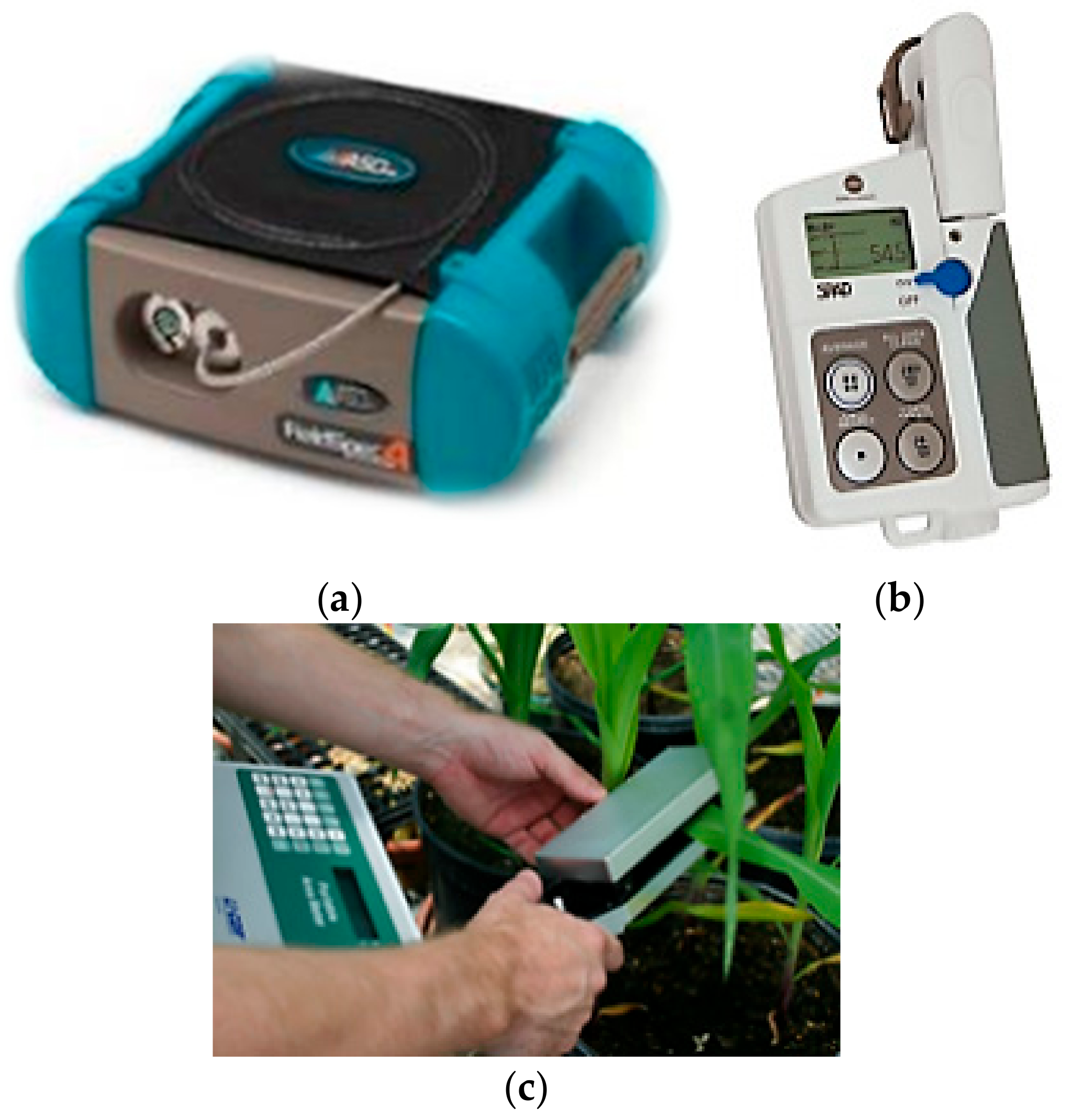
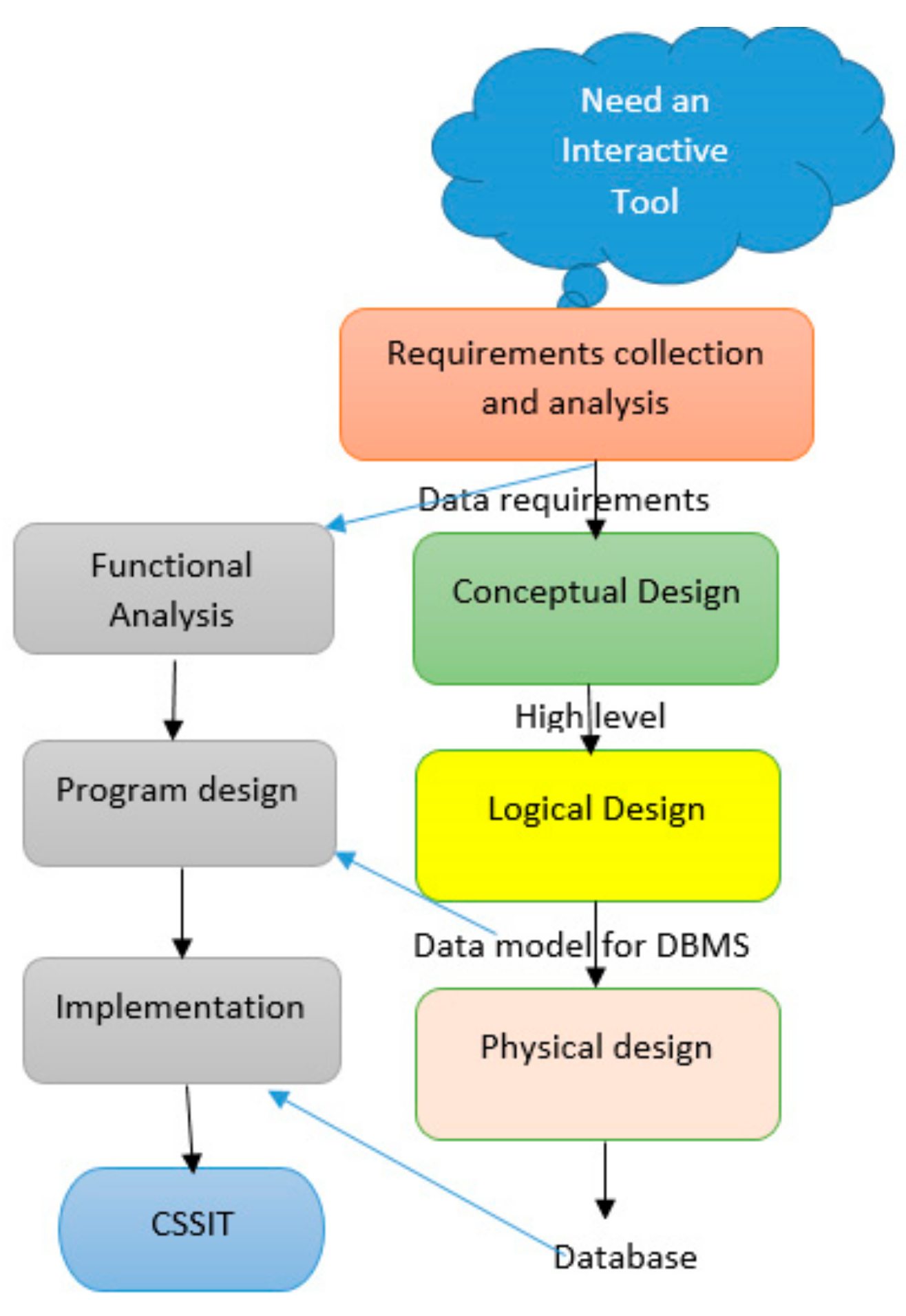

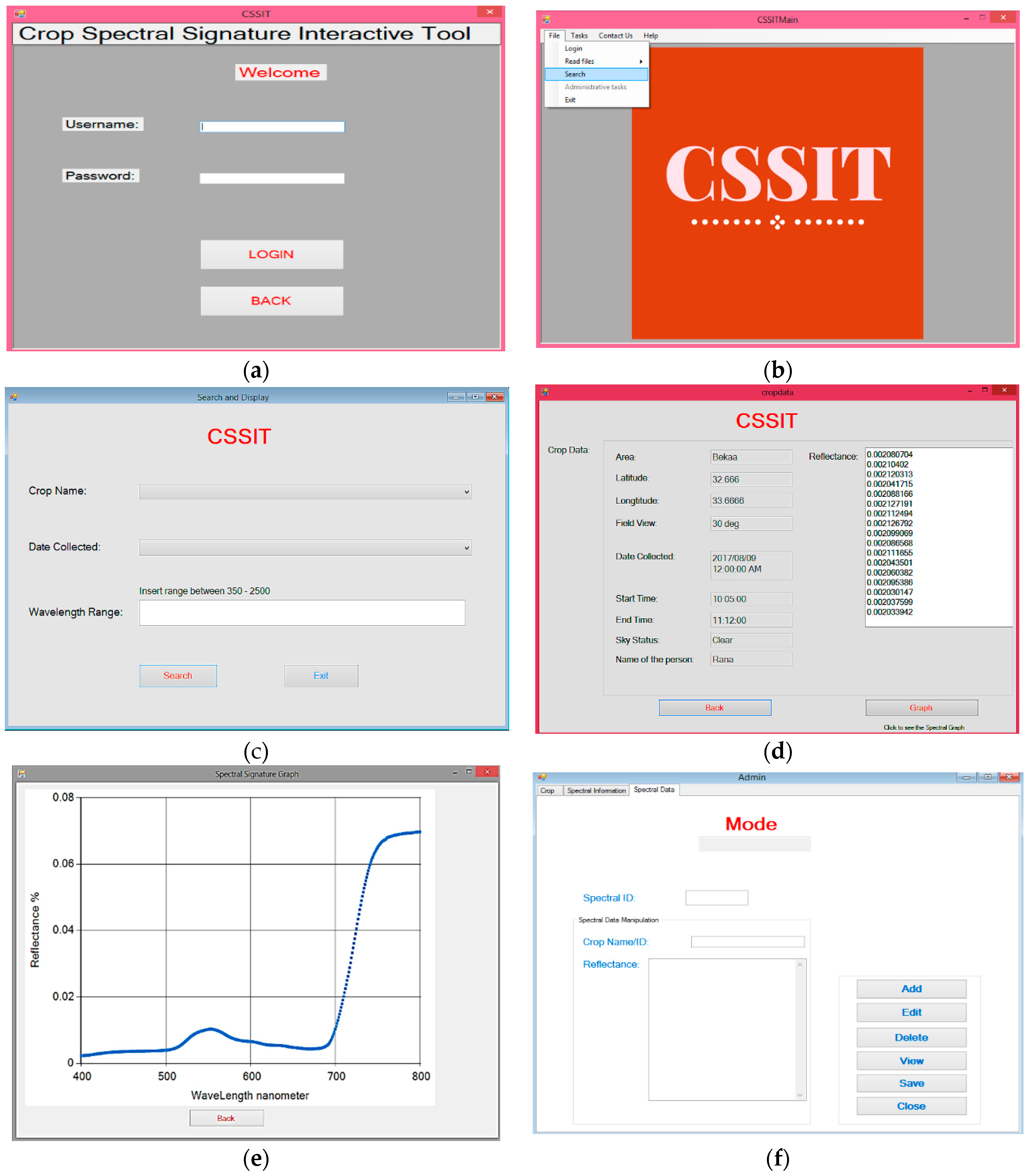

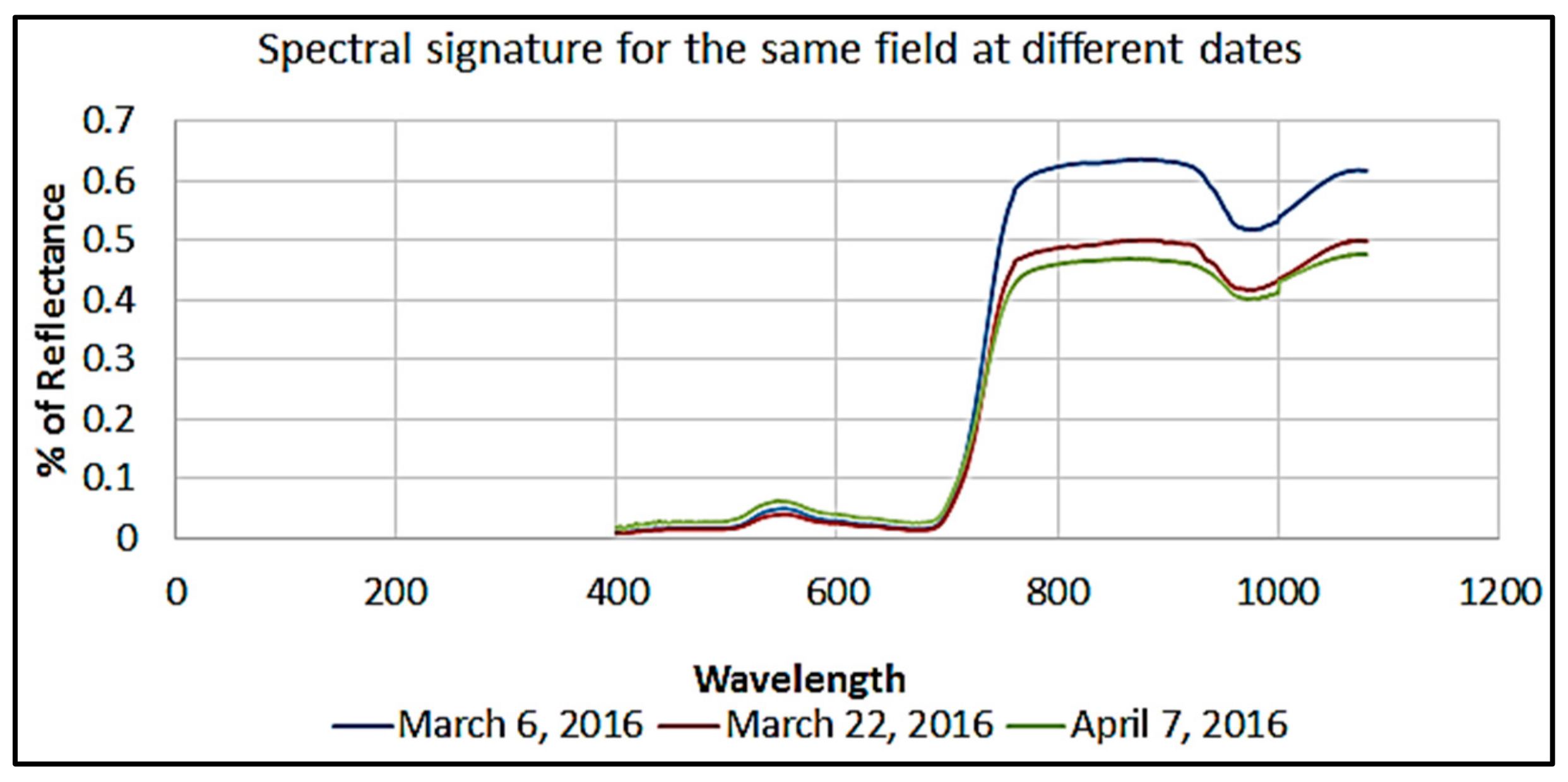
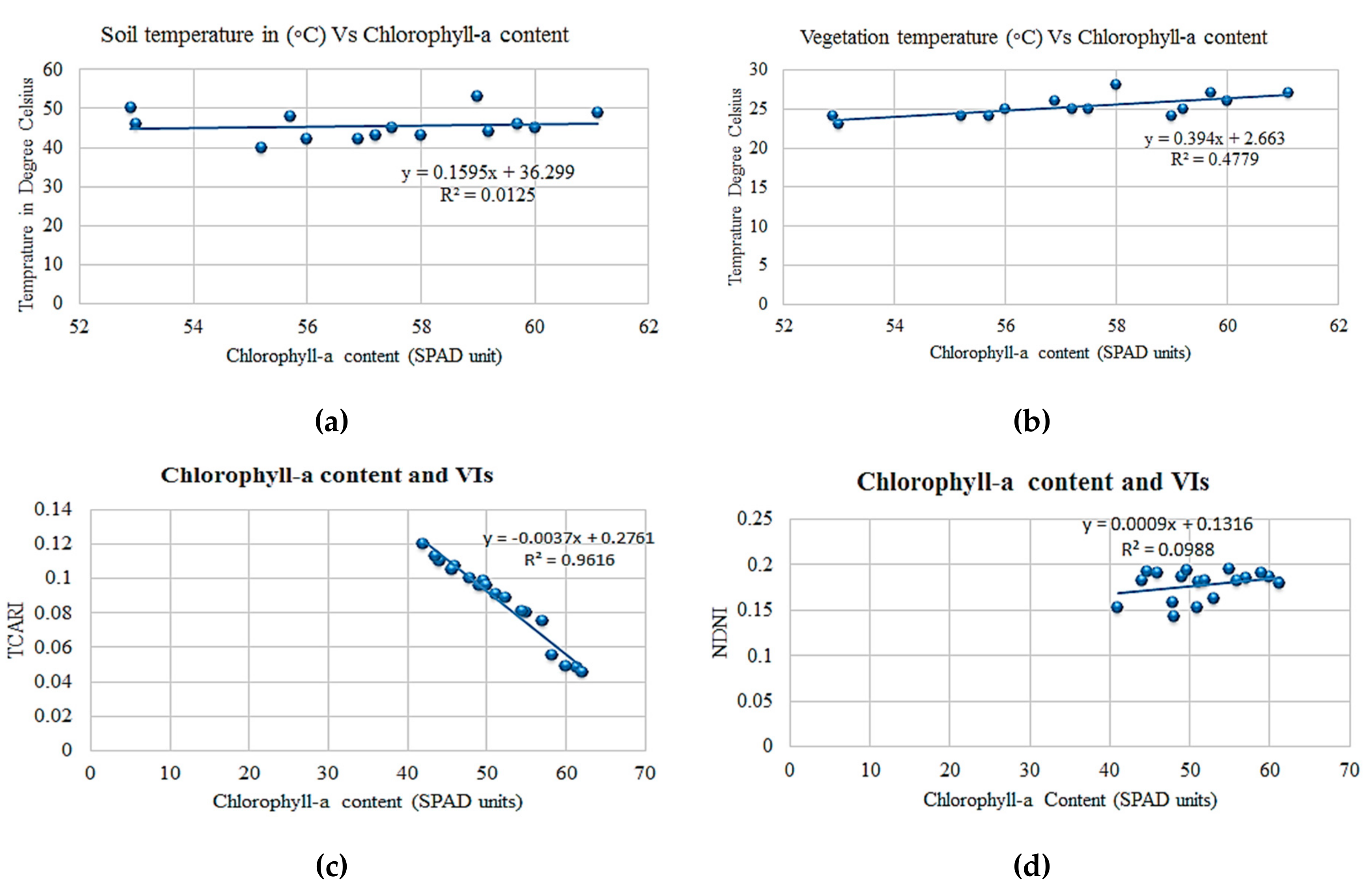
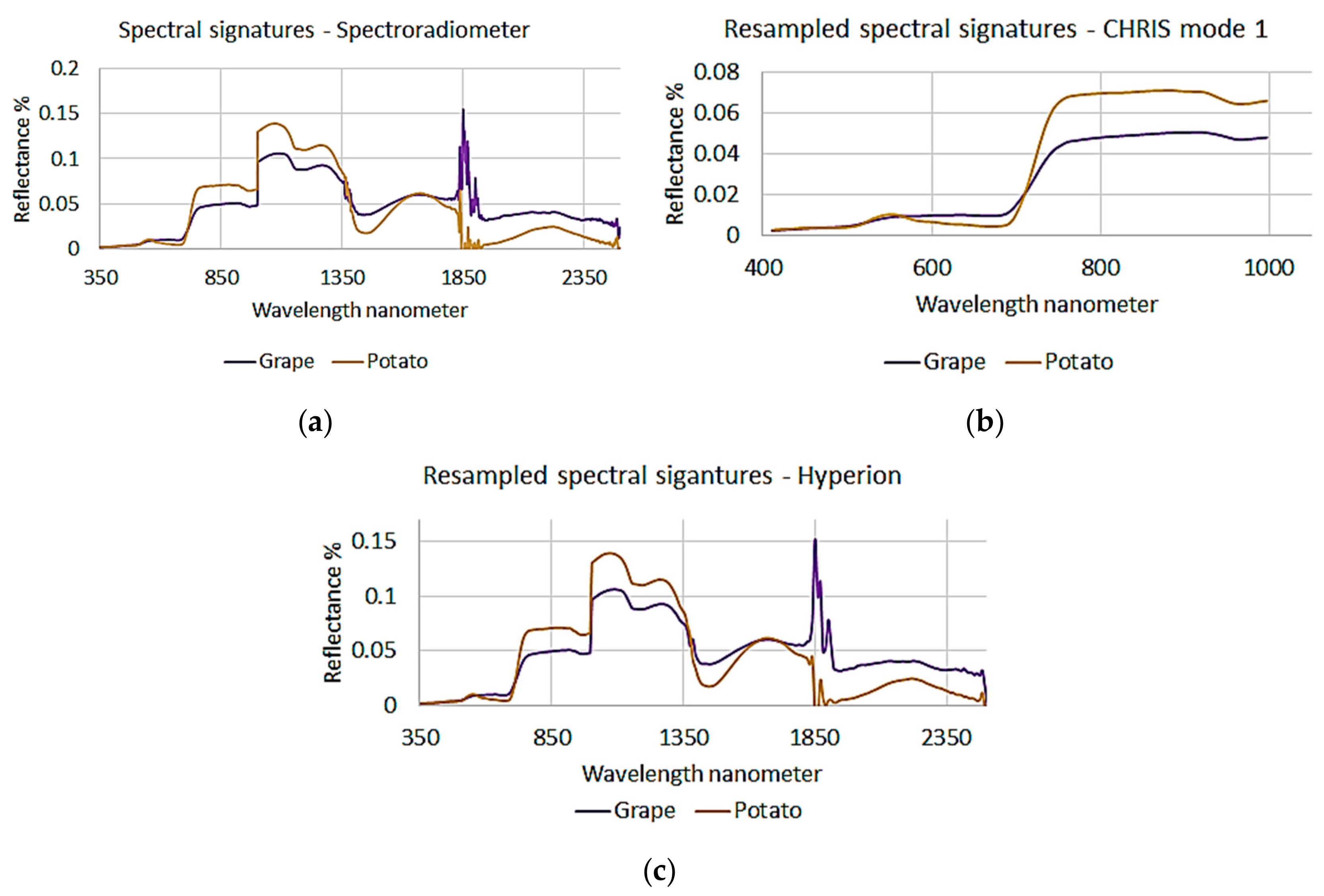
| Crop | Longitude | Latitude | SPAD Meter | Leaf T0 | Soil T0 |
|---|---|---|---|---|---|
| Potato | 35 48.798 | 33 46.421 | 49.4 | 22 | 30–33 |
| 41 | 21 | 30–33 | |||
| 44.2 | 20 | 30–33 | |||
| 45.8 | 25 | 30–33 | |||
| Potato | 35 48.799 | 33 46.396 | 46.5 | 23 | 36 |
| 37.9 | 22 | 36 | |||
| 43.6 | 20 | 36 | |||
| 42.9 | 21 | 36 | |||
| Potato | 35 48.367 | 33 45.428 | 49.3 | 20 | 28 |
| 41.7 | 18 | 28 | |||
| 46.7 | 20 | 28 | |||
| 44.8 | 20 | 32 | |||
| Potato | 35 48.894 | 33 46.687 | 36.8 | 21 | 20–22 |
© 2019 by the authors. Licensee MDPI, Basel, Switzerland. This article is an open access article distributed under the terms and conditions of the Creative Commons Attribution (CC BY) license (http://creativecommons.org/licenses/by/4.0/).
Share and Cite
Awad, M.M.; Alawar, B.; Jbeily, R. A New Crop Spectral Signatures Database Interactive Tool (CSSIT). Data 2019, 4, 77. https://doi.org/10.3390/data4020077
Awad MM, Alawar B, Jbeily R. A New Crop Spectral Signatures Database Interactive Tool (CSSIT). Data. 2019; 4(2):77. https://doi.org/10.3390/data4020077
Chicago/Turabian StyleAwad, Mohamad M., Bassem Alawar, and Rana Jbeily. 2019. "A New Crop Spectral Signatures Database Interactive Tool (CSSIT)" Data 4, no. 2: 77. https://doi.org/10.3390/data4020077
APA StyleAwad, M. M., Alawar, B., & Jbeily, R. (2019). A New Crop Spectral Signatures Database Interactive Tool (CSSIT). Data, 4(2), 77. https://doi.org/10.3390/data4020077






